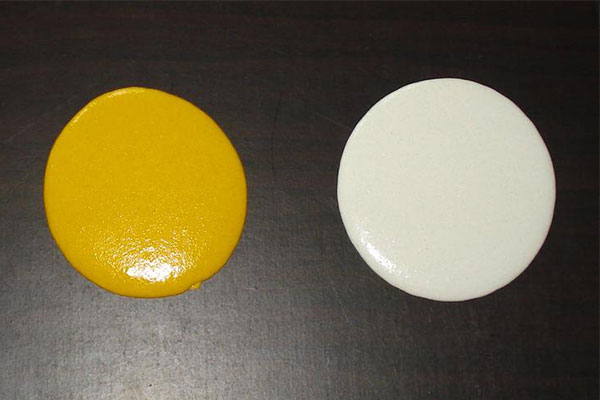How to Make Thermoplastic Road Marking Paint?
Road markings are an essential component of our transportation infrastructure. They provide vital information to drivers, pedestrians, and cyclists, ensuring safe and efficient traffic flow. One of the most durable and widely used materials for road marking is thermoplastic road marking paint. In this article, we will explore the process of making thermoplastic road marking paint.

What is Thermoplastic Road Marking Paint?
Thermoplastic road marking paint is a type of road paint that consists of pigments, binders, fillers, and glass beads. It is called “thermoplastic” because it can be heated and applied to the road surface, where it cools and solidifies quickly. This characteristic makes it highly durable and long-lasting, capable of withstanding heavy traffic and harsh weather conditions.
Ingredients Required for Making Thermoplastic Road Marking Paint
- Resin: The primary component of thermoplastic road marking paint is a resin, which can be either alkyd or hydrocarbon-based. The resin provides adhesion and binds all the other ingredients together.
- Pigments: Pigments are added to give the paint its color. White is the most common color for road markings, but other colors may be used for specific purposes.
- Fillers: Fillers such as calcium carbonate or titanium dioxide are added to improve the paint’s opacity and reduce cost.
- Glass Beads: Glass beads are crucial for providing retro-reflectivity, making road markings visible at night when headlights shine on them.
- Plasticizers: Plasticizers are added to improve the paint’s flexibility and adhesion to the road surface.
- Curing Agents: These agents help the paint solidify and cure quickly after application.
The Manufacturing Process
The manufacturing process of thermoplastic road marking paint involves several steps:
- Resin Melting: The first step is to melt the resin in a dedicated heating vessel. The temperature is carefully controlled to prevent degradation of the resin.
- Adding Pigments and Fillers: Once the resin is molten, pigments and fillers are added to the mixture. The choice of pigments and their concentration determines the paint’s color and opacity.
- Incorporating Plasticizers: Plasticizers are blended into the mixture to enhance the paint’s flexibility and adhesion properties.
- Curing Agent Addition: Curing agents are introduced to ensure the paint solidifies quickly upon application.
- Mixing: The mixture is thoroughly stirred to ensure all ingredients are evenly distributed. This step is critical for achieving consistent quality.
- Glass Bead Dispersion: Glass beads are added to the paint mixture. They play a crucial role in providing retro-reflectivity, enhancing visibility at night.
- Cooling and Packaging: Once the paint mixture is ready, it is allowed to cool and solidify. It is then packaged into bags or containers for distribution and use.
Application of Thermoplastic Road Marking Paint
After the paint is manufactured, it is transported to the road marking site. To apply thermoplastic road marking paint, it must be heated to a specific temperature (usually between 190°C and 220°C). Specialized road marking equipment is used to heat the paint and apply it to the road surface in the desired pattern. As the paint cools, it solidifies, creating durable and highly visible road markings.
Conclusion
Thermoplastic road marking paint is a critical component of our transportation infrastructure, providing clear and durable markings for roads. Whether you’re a road maintenance professional seeking to perfect your craft or simply curious about the inner workings of infrastructure, understanding how this paint is made is critical to keeping roads safe and clearly marked.
RoadSky is a quality thermoplastic road marking paint manufacturer and supplier, if you are looking for thermoplastic road marking paint for your project, you can contact us directly for more information.

